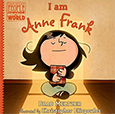|
|
|
|
|
|
 |
Canal bikes – Rent pedal boats called "canal
bikes" and pedal your way around the canals. This is a fabulous way
to see those wonderful old canal houses and uses up a lot of energy (let
your kids do the pedaling). The "bikes" seat four and have canvas
awnings in case of rain. My kids voted canal biking as their favorite thing
to do in Amsterdam. |
|
|
|
| |
|
There are four rental locations – in front of the Westerkerk, and also at
the Leidseplein, in front of the Rijksmuseum, and on the Keizers-gracht
near the Leidsestraat bridge. |
|
|
|
|
| |
|
 |
Walk along the canals – Walking along the canals is a must-do, crossing back and forth along bridges, checking out houseboats moored alongside (you might even see one with grass growing on the roof), watching the boats chugging through the canal, ducks and swans gliding by. Here's a good walk down one of the oldest canals, the Singel. Start at Prins Hendrikkade, check out the locks, before walking down the Singel. The house at No. 7 is the narrowest house in Amsterdam, as wide as a door. Walk down the canal as far as the kids like, you can keep going all the way to Muntplein. Along the way, stop into a cafe for a sweet snack. |
|
|
|
|
|
|
 |
Woonbootmuseum (Houseboat museum) Prinsengracht
296 – Ever wondered what it’s like inside a houseboat? Visit
the Woonbootmuseum. The houseboat is very homey and cozy, especially nice
on a rainy or gray afternoon. The museum has a children’s play corner
(kids can color pages of houseboats), and a café with coffee, hot chocolate
and soft drinks. |
|
|
|
|
|
|
 |
Climb up the tower of the Westerkerk – The tower
of the Westerkerk church on the Prinsengracht is a landmark in Amsterdam.
Climb up the church tower to get a panoramic view of Amsterdam from the
observation deck. The kids liked looking at all the comings and goings in
the city below, like a living miniature city. |
|
|
|
| |
|
The Westerkerk itself is a lovely spare church. The schedule
of free concerts in the evening is posted outside. |
|
|
|
|
| |
|
 |
Anne Frank House – Down the street from the Westerkerk
is the Anne Frank house, sandwiched in among other houses along the Prinsengracht.
It's a rare experience to walk into the small rooms where the Frank family
went into hiding in World War II. Anne Frank did not survive, but The
Diary of Anne Frank, a record of her teen years in this house, is tribute
to the youthful spirit of hope amidst the destruction of war. From the attic,
she could see the tower of the Westerkerk, trees and sky. |
|
|
|
|
| |
|
|
Tip: The Anne Frank House isn't all that big, and is very popular. Especially in summer, buy your tickets in advance online. |
|
|
|
|
| |
|
 |
There are small playgrounds, near the Noorderkerk,
(slides and swings) and Frederick Hendrik Plein (sandbox
and jungle gym) in the Jordaan. |
|
|
|
|
 |
 |
|
|
|
|
|
|
|
|
| |
|
|
 |
|
"By remembering and telling Anne's story, we make sure nothing like this ever happens again."
As a girl Anne liked to go to the movies and write stories, but her family was Jewish. In 1942, the Nazis started rounding up Jews to send to concentration camps. The Frank family went into hiding in a secret annex. Anne started to write in her diary. "I believe that people are truly good at heart." (Picture book)
|
|
|
|
|
|
| |
|
|
|
Illustrated biography of Anne Frank, about her life growing up in Amsterdam, going into hiding when the Nazis take over, living in the secret annex, capture and imprisonment, and enduring author of her famous diary. (Chapter book)
|
|
|
|
|
|
|
|
|
|
|
|
| |
|
|
 |
|
In 1944, Anne Frank had lived in hiding for almost two years. But from her attic room she could see a tall chestnut tree. The tree and sky meant beauty and peace, despite the war around her. Anne did not survive, but the chestnut tree did. Even after a storm knocked it down, from the chestnuts people planted new trees, all over the world. (Easy reader)
|
|









